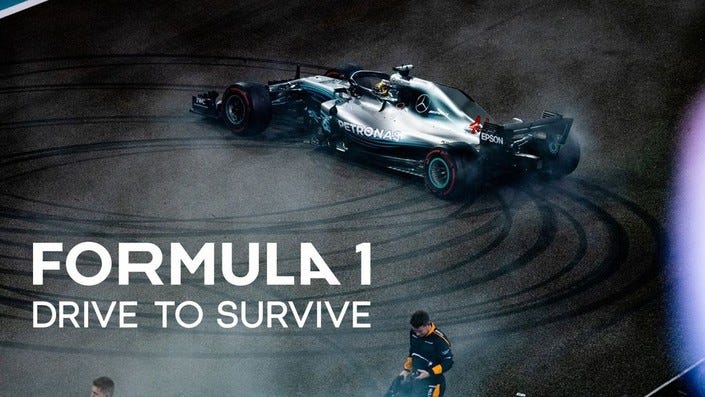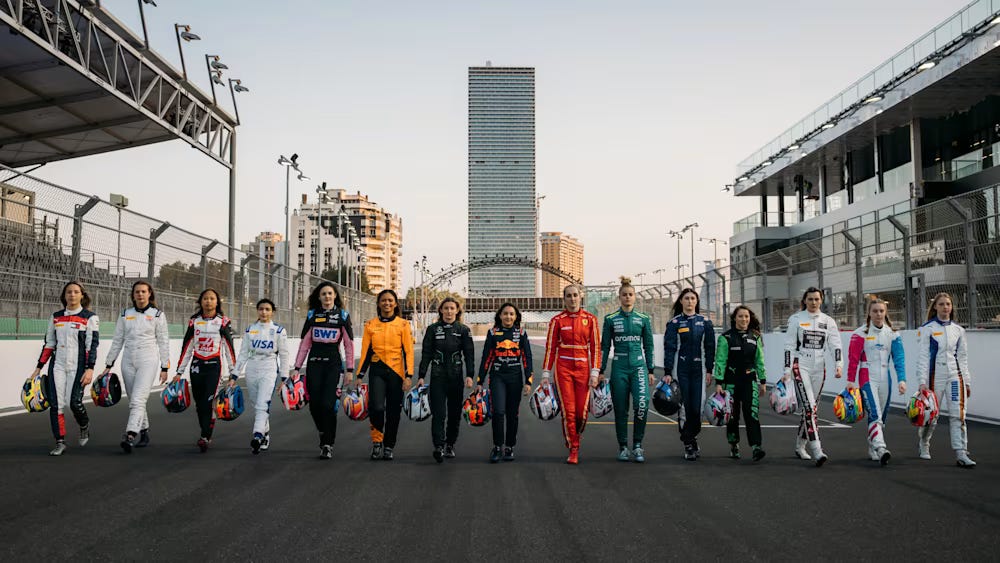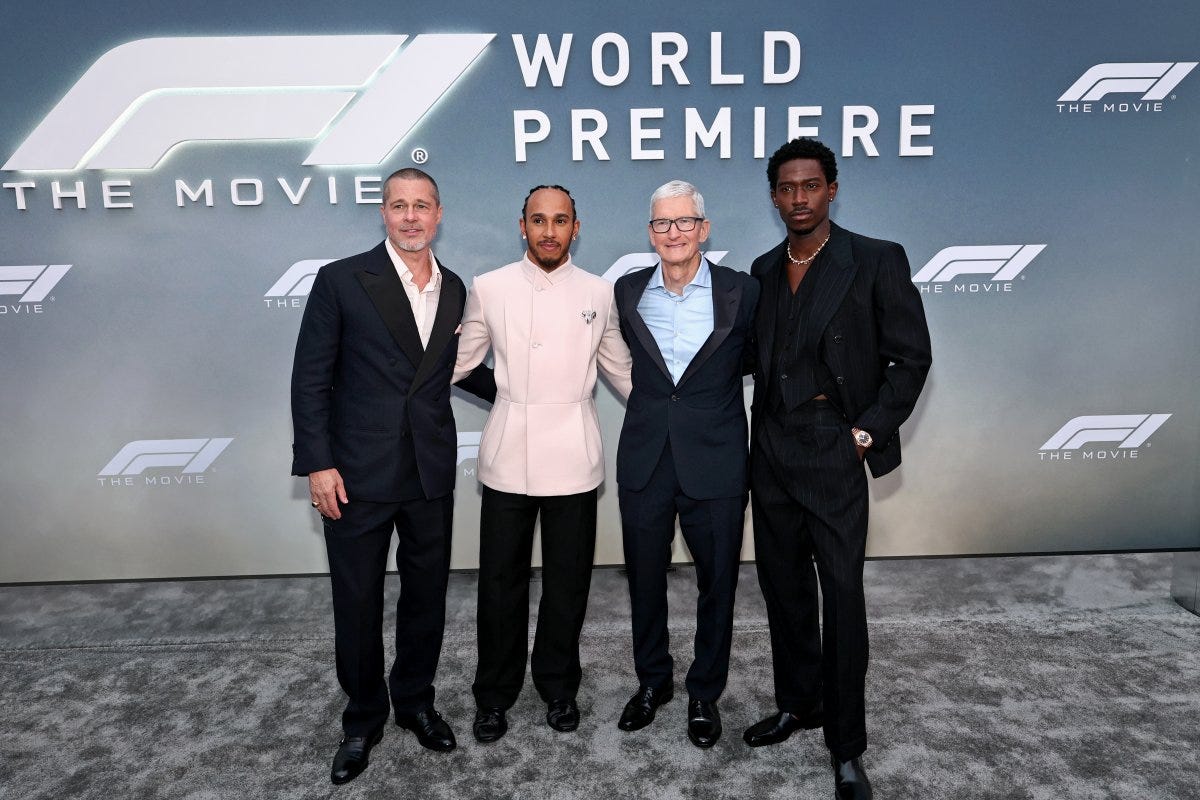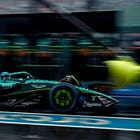Meet the Studios Shaping Global Racing Fans
Motorsport’s New Power Brokers
You are receiving this email because you subscribed to Business of Speed, the newsletter for those wanting to stay ahead on what’s happening behind the scenes. I’m Vincenzo Landino, a business, tech, and F1 commentator. I’ve spent the last ten years at the intersection of content, partnerships, and the business of motorsport. This newsletter is where I break down what’s working, what’s shifting, and what’s next without the PR gloss. Thank you for being here.
In 2018, Formula 1 had 264 million unique TV viewers. Five years later, after Netflix’s Drive to Survive, that number topped 445 million. The jump did not come from a new engine formula or a title sponsor. It came from a production company.
Motorsport is no longer just a sport; it has become a lifestyle. It is a content IP factory. The most powerful players in the paddock are not team principals or OEM CEOs. They are the producers calling the shots from edit bays in London, Los Angeles, and Paris.
The Netflix Effect
Box to Box made more than a documentary. They engineered a market expansion strategy.
Drive to Survive turned F1 from a niche Euro-centric sport into a mainstream U.S. entertainment product, winning a Sports Emmy and spawning spinoffs across golf (Full Swing), rugby (Six Nations: Full Contact), cycling (Tour de France: Unchained), and now track and field (Sprint).
Key stat: F1’s U.S. TV viewership jumped 40% in the first two seasons of DTS. Race attendance in America reached record highs in the same period.
The playbook is ruthless but straightforward: secure exclusive access, control the narrative arc, and use Netflix’s global distribution to scale the audience.
The Female-Forward Disruption
Reese Witherspoon’s Hello Sunshine is bringing Hollywood’s female-driven storytelling to motorsport. Their partnership with F1 Academy on a seven-part Netflix docuseries this year is not a charity project. It is a demographic growth strategy.
Susie Wolff calls it “rocket fuel” for female participation in racing. The goal is to broaden the audience, expand sponsorship categories, and monetize the fastest-growing segment of the F1 fanbase.
Distribution reach: Over 160 territories.
Production pedigree: Big Little Lies, The Morning Show, Little Fires Everywhere.
Lewis Hamilton’s Next Grid
Lewis Hamilton’s Dawn Apollo Films is a pure athlete-to-mogul transformation. Backed by Apple TV+, the slate includes:
The massively successful F1 film starring Brad Pitt, directed by Top Gun: Maverick’s Joe Kosinski
A Hamilton documentary
Three original scripts Hamilton is writing himself (two animations and one live-action)
It follows the LeBron James model: control the narrative, monetize the brand, and build a post-competition empire.
Content as a Profit Center
Historically, motorsport content was a marketing expense. Today, it is a standalone revenue engine.
Netflix pays licensing fees.
Apple bankrolls originals.
Global distribution turns storytelling into a recurring revenue stream.
The bigger disruption comes from exclusivity.
The most valuable real estate in motorsport now lives on the world’s biggest streaming platforms.
Series that embrace these production partnerships will tap new demographics, unlock fresh sponsor categories, and expand globally without adding a single race to the calendar.
The question for the paddock is no longer “Should we do a documentary?” The real question is “Who gets to tell our story, and what will they own when they do?”
If you want the inside track on how content, deals, and dollars move the motorsport world, hit subscribe and share with a colleague.
PS: I’m exploring a “Business of Speed Playbook” series on applying F1 operating models to content, sales, and partnerships. If that’s a fit for your team, reply to this email with “PLAYBOOK” and I’ll reach out.








